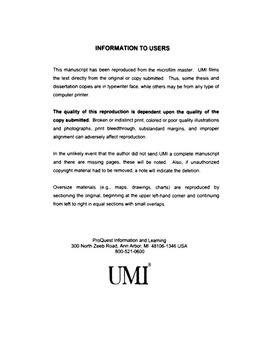| dc.contributor.advisor | Straka, Jerry M., | en_US |
| dc.contributor.author | Askelson, Mark Anthony. | en_US |
| dc.date.accessioned | 2013-08-16T12:18:48Z | |
| dc.date.available | 2013-08-16T12:18:48Z | |
| dc.date.issued | 2002 | en_US |
| dc.identifier.uri | https://hdl.handle.net/11244/526 | |
| dc.description.abstract | The role hook-echo hydrometeors play in driving RFDs is investigated by estimating hook-echo hydrometeor types and amounts from polarimetric radar data and by using that information to drive a relatively simple downdraft model. Soundings for the individual cases are used to initialize the downdraft model in order to replicate the environments of the storms as closely as possible. | en_US |
| dc.description.abstract | Simulations of hydrometeor driven RFDs show that hydrometeor fields inferred from radar data are able to drive significant downdrafts without the influence of vertical perturbation pressure gradients. Moreover, they reveal that above the boundary layer supercell environments are relatively resistant to downdrafts whereas within the boundary layer they are generally supportive of downdrafts. It appears that in many supercell environments relatively large hail (≥ 1 cm in diameter) or vertical perturbation pressure gradients may be needed to drive deep midlevel downdrafts that penetrate into the boundary layer. Because the boundary layer is an important downdraft generation/intensification layer, its thetae profile appears to be important to the surface RFD thetae deficit and, consequently, to tornadogenesis. To further examine these issues, analyses using idealized soundings that represent multiple possible RFD environments and analyses of the complete set of VORTEX cases are planned. | en_US |
| dc.description.abstract | Recent studies have revealed that the thermodynamic properties of the rear flank downdraft (RFD) may dictate whether or not a supercell becomes tornadic. Since hydrometeors are thought to be an important driving force for the RFD, it is postulated that they may be important to its thermodynamic properties and, possibly, to tornadogenesis. | en_US |
| dc.description.abstract | Since this effort and others like it require the quantitative utilization of radar data, issues pertaining to this are explored. In addition to analyses of coordinate transformation equations and an innovative objective analysis technique for weather radar data, the difficult problem of response functions for arbitrary weight functions and data distributions was considered. A novel approach to this problem revealed that the local response function for distance dependent weighted averaging schemes is the complex conjugate of the normalized Fourier transform of the effective weight function. This facilitates new research avenues, especially regarding analyses of irregularly spaced data. | en_US |
| dc.format.extent | xiii, 245 leaves : | en_US |
| dc.subject | Thunderstorms. | en_US |
| dc.subject | Hydrometeorology. | en_US |
| dc.subject | Geophysics. | en_US |
| dc.subject | Physics, Atmospheric Science. | en_US |
| dc.subject | Tornadoes. | en_US |
| dc.title | Kinematic, dynamic, and thermodynamic impacts of hook-echo hydrometeors, including explorations into the utilization of polarimetric radar data. | en_US |
| dc.type | Thesis | en_US |
| dc.thesis.degree | Ph.D. | en_US |
| dc.thesis.degreeDiscipline | School of Meteorology | en_US |
| dc.note | Source: Dissertation Abstracts International, Volume: 63-11, Section: B, page: 5292. | en_US |
| dc.note | Adviser: Jerry M. Straka. | en_US |
| ou.identifier | (UMI)AAI3070631 | en_US |
| ou.group | College of Atmospheric & Geographic Sciences::School of Meteorology | |
